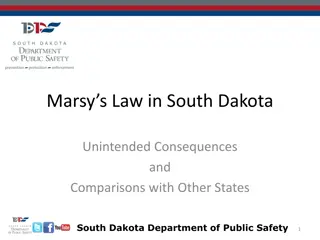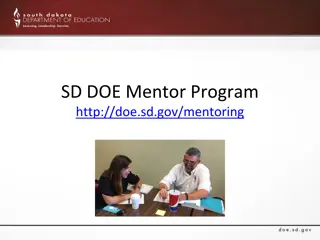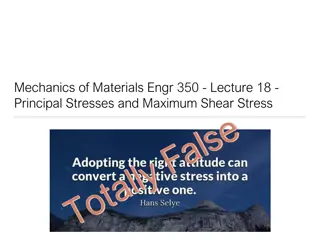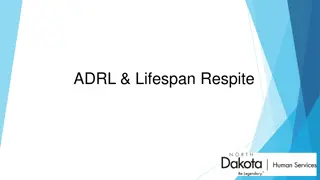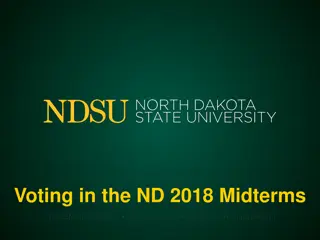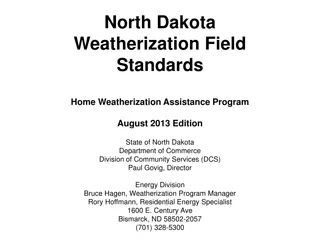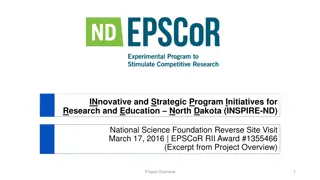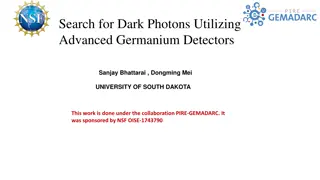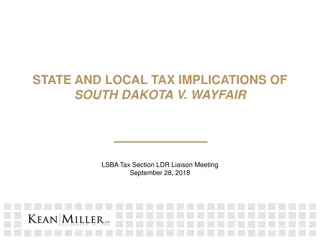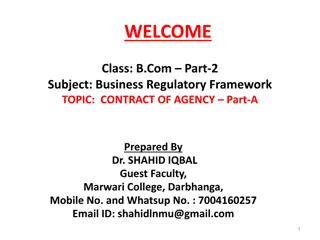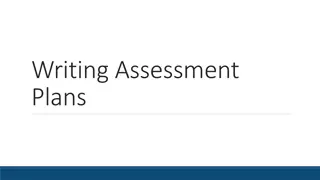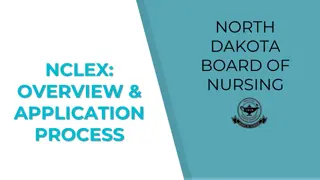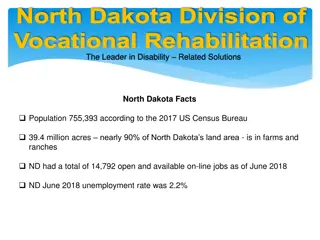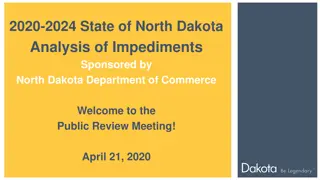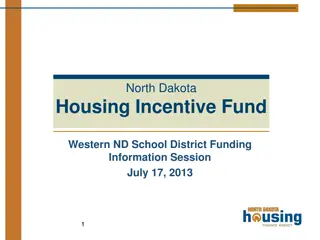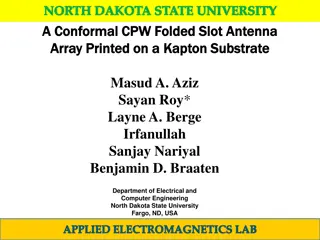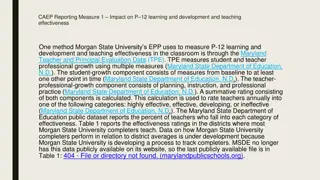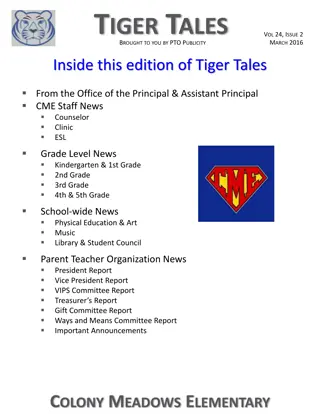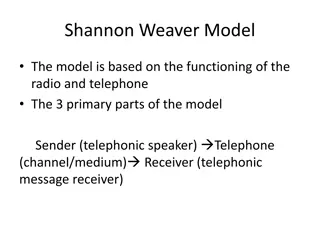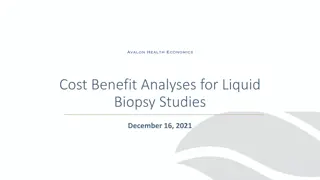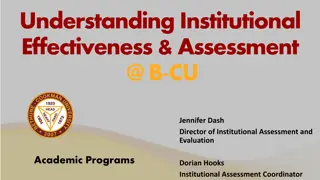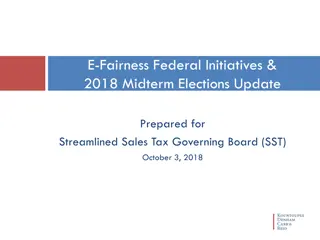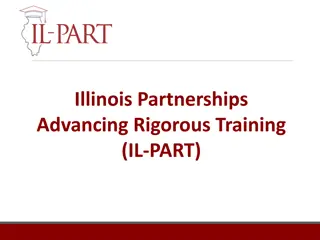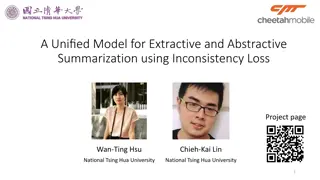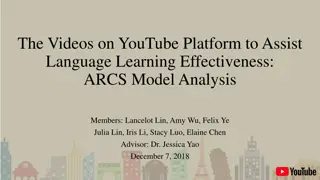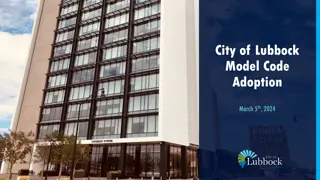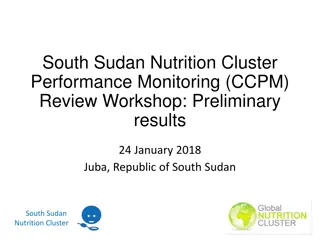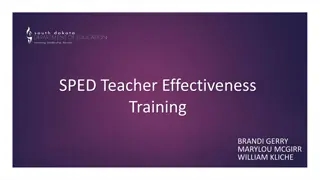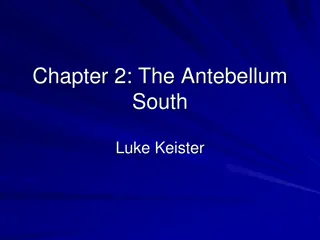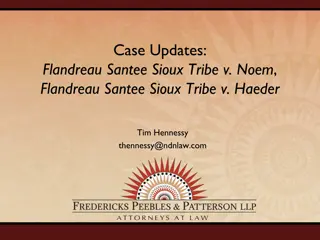South Dakota Principal Effectiveness Model
Explore the South Dakota Principal Effectiveness Model that promotes shared vision, strategic goals, and objectives for student achievement. Enhance leadership skills and drive continuous improvement for administrators, staff, and students.
Download Presentation

Please find below an Image/Link to download the presentation.
The content on the website is provided AS IS for your information and personal use only. It may not be sold, licensed, or shared on other websites without obtaining consent from the author. Download presentation by click this link. If you encounter any issues during the download, it is possible that the publisher has removed the file from their server.
E N D
Presentation Transcript
South Dakota Principal Effectiveness Model 2/02/2023
Mission and Vision Domain 1 (DuFour, et al, 2006)
Shared Vision for School and Student Success 1.1
Shared Vision for School and Student Success Considerations 1. Does our school have a clear mission statement? 2. Was our mission statement developed collectively? 3. Is our mission statement frequently referenced by faculty members in formal and informal meetings? 4. Have we defined vision statements or guiding principles that describe what our mission should look like in action? 5. Do we allocate both human and financial resources toward efforts that support our mission?
Shared Vision for School and Student Success Considerations 6. Do we make hiring decisions that support our mission? 7. Do our grade level/content level, and/or learning teams have the flexibility/freedom to make decisions when they are aligned with our mission? 8. When faced with decisions that are not aligned with our mission, do we as administrators question the decisions even when the question might be unpopular with our staff? 9. Do community partnerships support our mission? 10. Do we regularly review our mission and vision?
Shared Vision for School and Student Success Establishes specific and measurable goals and objectives related to student achievement. Leads and implement a process for developing a shared vision, strategic goals, and objectives for student achievement that reflect high expectations for students and staff. Maintains a focus on the vision and strategic goals throughout the school year. BASIC Insures actions of teachers and leaders are aligned to the school s goals, objectives and strategies. Makes decisions consistent with vision of the school as reflected in SIP. With stakeholders, creates a vision that inspires action. Demonstrates (through strategy development) a general understanding of the research on school and instructional effectiveness. Supports a vision that reflects high expectations for learning and teaching. Promotes continuous improvement for administrators, staff, and students. PROFICIENT Involves stakeholders in a comprehensive diagnosis of school s strengths and weaknesses using appropriate data and leads a collaborative process to develop annual goals. Insures a visible vision ingrained in the culture of the organization and routinely used a reference point for decision making Insures that strategies in the SIP cite specific research that shows high effect sizes and influence on student achievement. Uses strategic guidelines for decision making to avoid time wasted on unproductive arguments. Ensures that the school s identity (vision, mission, goals, objectives, strategies) actually drives decisions and DISTINGUISHED
Reviewing and Monitoring for School Improvement Domain 1.2 Leadership is about vision. But Leadership is equally about creating a climate where the truth is heard and the brutal facts confronted. ~Jim Collins in Good to Great
Reviewing and Monitoring for School Improvement Resources, Strategies, Protocols, and Procedures DuFour, R., DuFour, R., Eaker, R., & Many, T. (2006). Learning by doing: A handbook for professional learning communities at work (pp.19-57 ). Bloomington, IN: Solution Tree Press. Graham, P., & Ferriter, W. (2010). Building a Professional Learning Community at Work, A Guide to the First Year. Bloomington, IN: Solution Tree Press. Guskey, Thomas. (2009). The Principal as Assessment Leader. Peery, Angela. (2011). The Data Teams Experience, A Guide for Effective Meetings (pp. 1-8, 53-59). Englewood, Colorado: The Leadership and Learning Center. Schmoker, Mike. (2001). The Results Fieldbook, Practical Strategies from Dramatically Improved Schools. (pp. 30- 43). Alexandria, VA: Association for Supervision and Curriculum Development. Schmoker, Mike. (2006). Results Now. (pp. 103-124). Alexandria, VA: Association for Supervision and Curriculum Development.
Reviewing and Monitoring for School Improvement Considerations An External View: 1. Are there demanding, shared goals which are publicly stated and embraced by all the educators in the building? 2. Can people articulate the changed they are trying to make and gauge where they are in the process? 3. Does the organization gather, process, and act on information in order to continuously strive to meet its goals? 4. Does the organization regularly share information with relevant external sources, such as other schools, community groups, and parent organizations? Adapted from Brandt, R,. 2003.
Reviewing and Monitoring for School Improvement Considerations An Internal View: 1. Does the organization collect and chart/display student achievement data (in a manner that protects and respects student confidentiality)? 2. Does the organization analyze the data and prioritize needs based upon the data? 3. Does the organization set, review, and revise incremental SMART goals? (specific, measurable, achievable, relevant, timely) 4. Does the leadership team/data team/grade level team select common instructional strategies to be employed to address the learning challenges discovered after an analysis of the data? 5. Do the various internal teams determine results indicators, i.e. When this strategy is implemented, what evidence can we expect to see as evidence of its effectiveness? Adapted from Perry, 2011
Reviewing and Monitoring for School Improvement Collects and analyzes data for determining the organization s effectiveness in accomplishing the vision of learning goals in the SIP Systematically considers new and better ways of leading for improved student achievement and engages stakeholders in the change process. BASIC Implements collaborative processes for the collection and analysis of data about the school s progress for the periodic review and revision of the school's improvement plan. Collects and analyzes data at least quarterly with school s leadership team to assess the organization s effectiveness in accomplishing the vision of learning. Utilizes data to modify organizational practices and procedures for any goal in which sufficient progress has not been made. PROFICIENT Using data, initiates changes to strategies to improve performance, school culture, and other conditions related to school success. Collects and analyzes data monthly with the school s leadership team to assess the organization s effectiveness in accomplishing the vision of learning and school goals. Collects data to examine fidelity to strategies in the school improvement plan. Communicates school-wide goals and actions frequently with all appropriate stakeholders. DISTINGUISHED
1. School vision and mission statements 2. School goals 3. Progress on school goals 4. Stakeholder surveys (parents, teachers, students, community) 5. School improvement plans Domain 1 Sample Artifact List 6. Minutes/Agendas of planning sessions 7. Progress on school improvement plans 8. School/Staff meeting agendas 9. Goal setting statements 10.SLO s 11.Data notebooks/Data retreats 12.Staffing plans 13.Schedules/Agendas of PLC s 14.Changes in curriculum and instruction based upon data
15. Documentation of instructional practices used in the school 16. Teachers professional learning opportunities aligned to mission/vision/goals 17. Hiring processes/procedures aligned to mission/vision 18. School budget aligned to mission/vision Domain 1 Sample Artifact List 19. Teacher professional growth plans aligned to mission/vision/goals 20. Community partnerships aligned to mission/vision 21. Parent and student handbooks 22. Parent newsletters clearly articulating the mission/vision 23. Family engagement in school-based activities aligned to mission/vision 24. School web-site 25. Principal professional growth plan aligned to mission/vision
Principal Effectiveness-Progress Monitoring and Discussion Guide DOMAIN 1: Vision and Goals Essential Questions: What can principals and superintendents look for and see to know the Principal Effectiveness process is making an impact? What will change both instructionally and culturally? Principal Effectiveness Domains Guiding Questions Look-Fors (principal focused) Look-Fors (teacher focused) Look-Fors (student focused) 1.Does our school have a clear mission statement? Component 1: Shared Vision for School and Student Success Example: Teacher interview questions reflecting the mission statement Example: Lesson fidelity to the mission and agreed upon strategies Example: Ability to articulate mission statement or articulate connection of mission to current learning 2.Was our mission statement developed collectively? 3.Is our mission statement frequently referenced by faculty members in formal and informal meetings? Learning Forward: Innovation Configuration Maps for Standards of Professional Learning: School-Based Roles (2012).
Principal Effectivenes s Comparison to Turnaround Principles https://doe.sd.gov/Effectiven ess/documents/PE- turnaround.pdf
Principal Effectiveness Tools https://doe.sd.gov/Effectiveness/Principal.a spx
Other Sources Brandt, R. (2003). Data teams success stories, volume 1. Englewod, CO: Lead and Learn Press. Collins, J. (2001). Good to Great: Why some companies make the leap and others don t. New York: Harper Collins.


